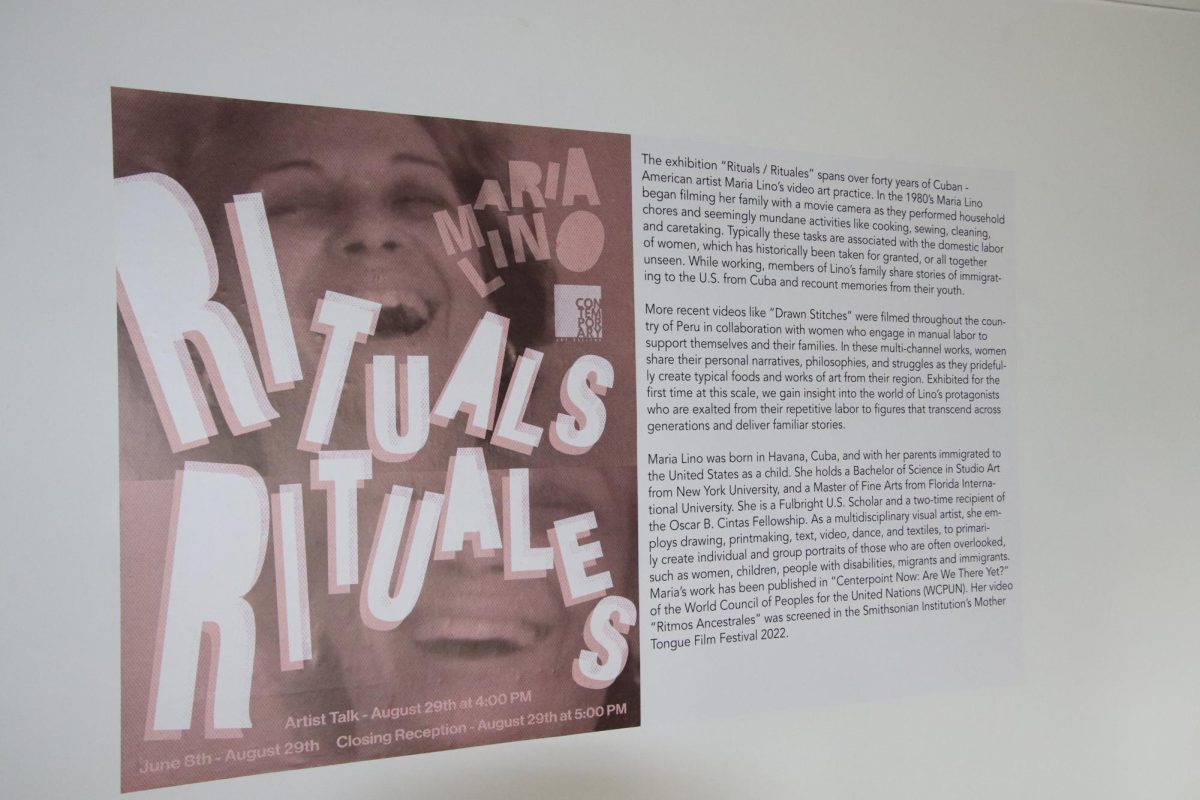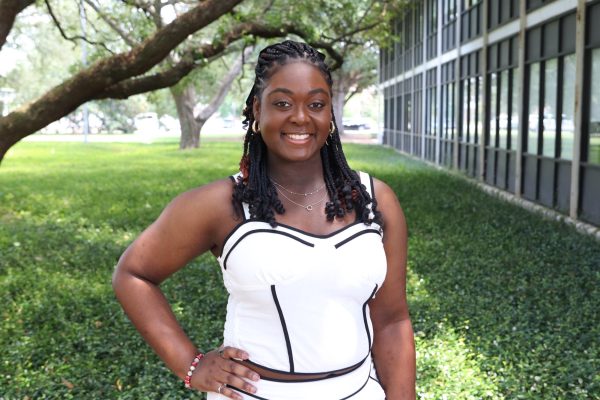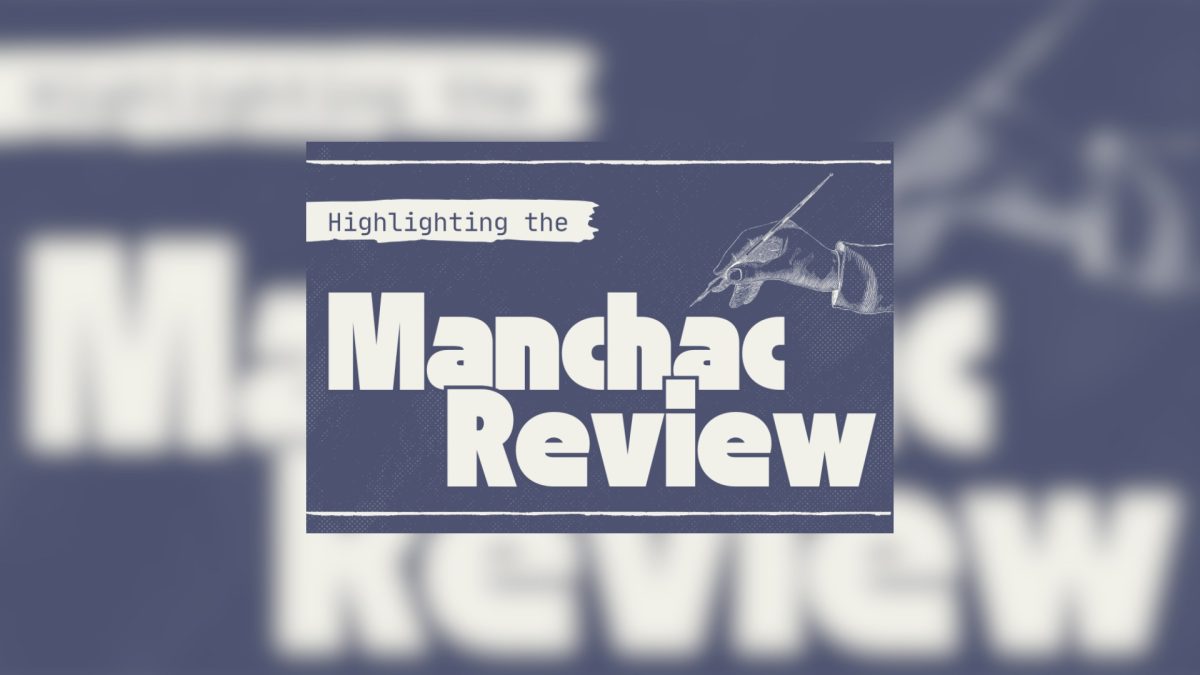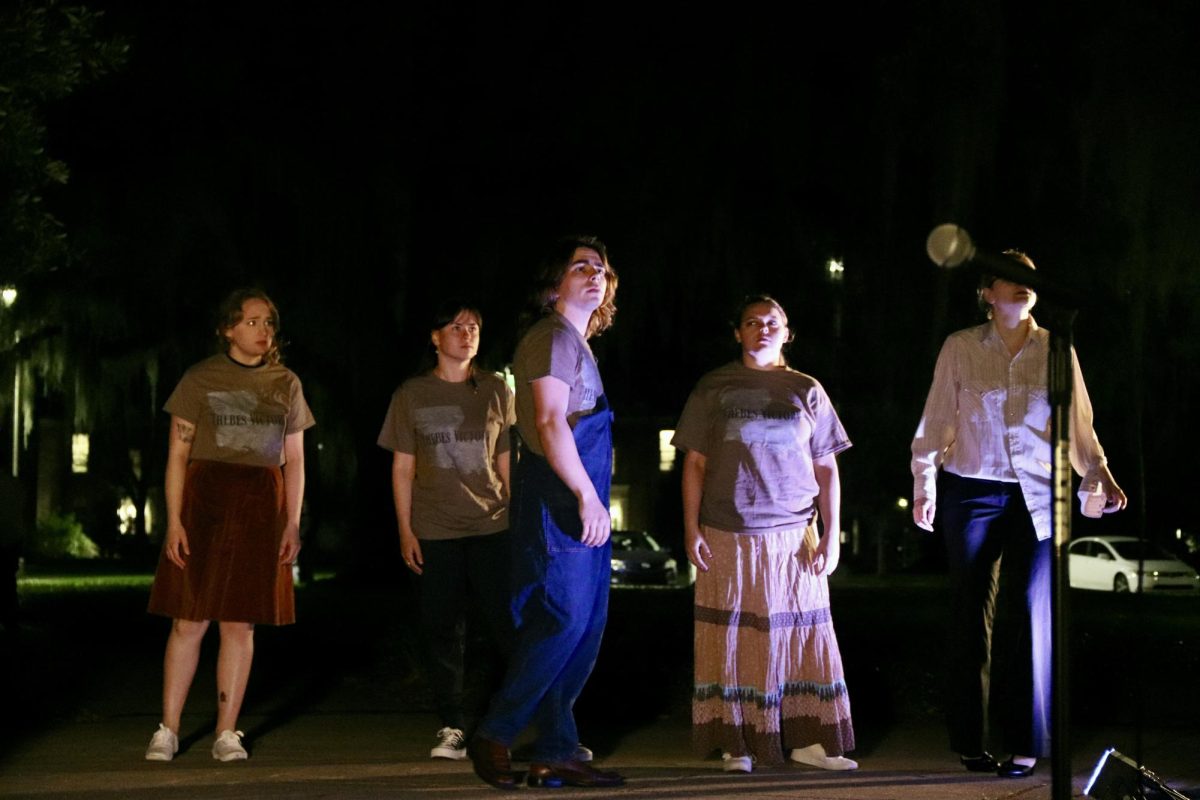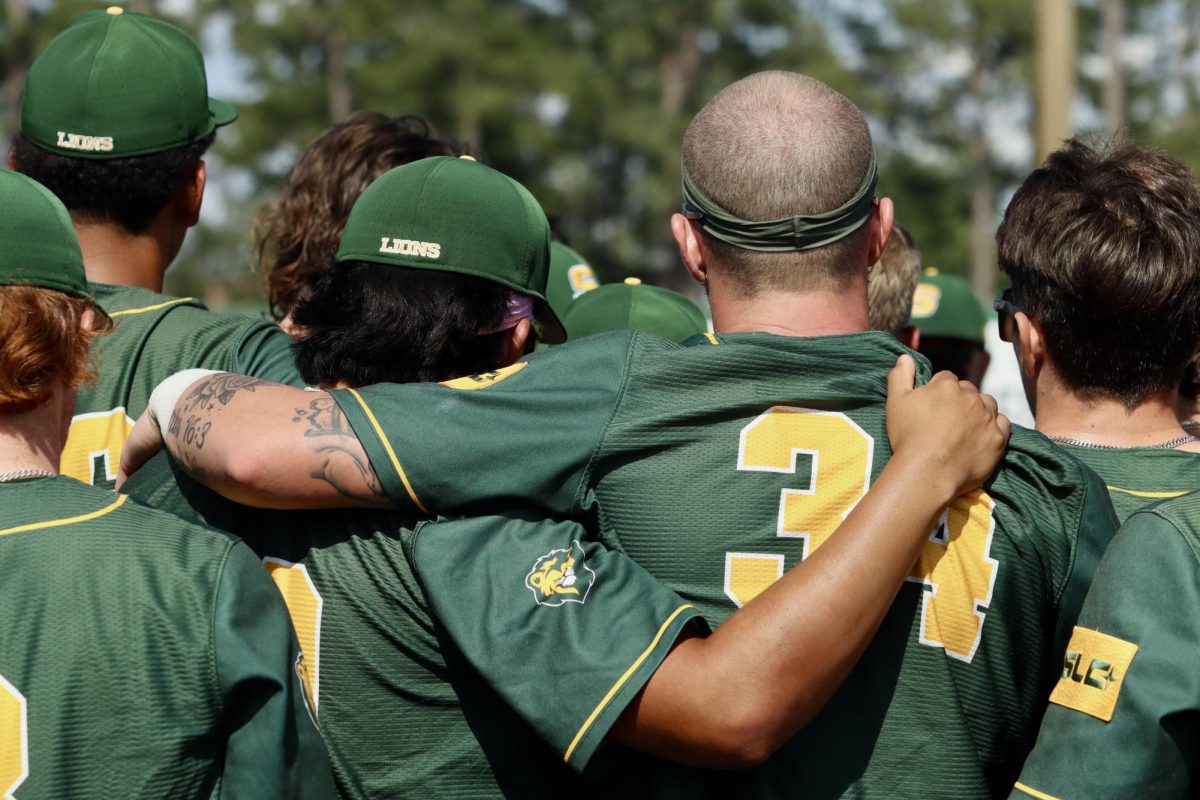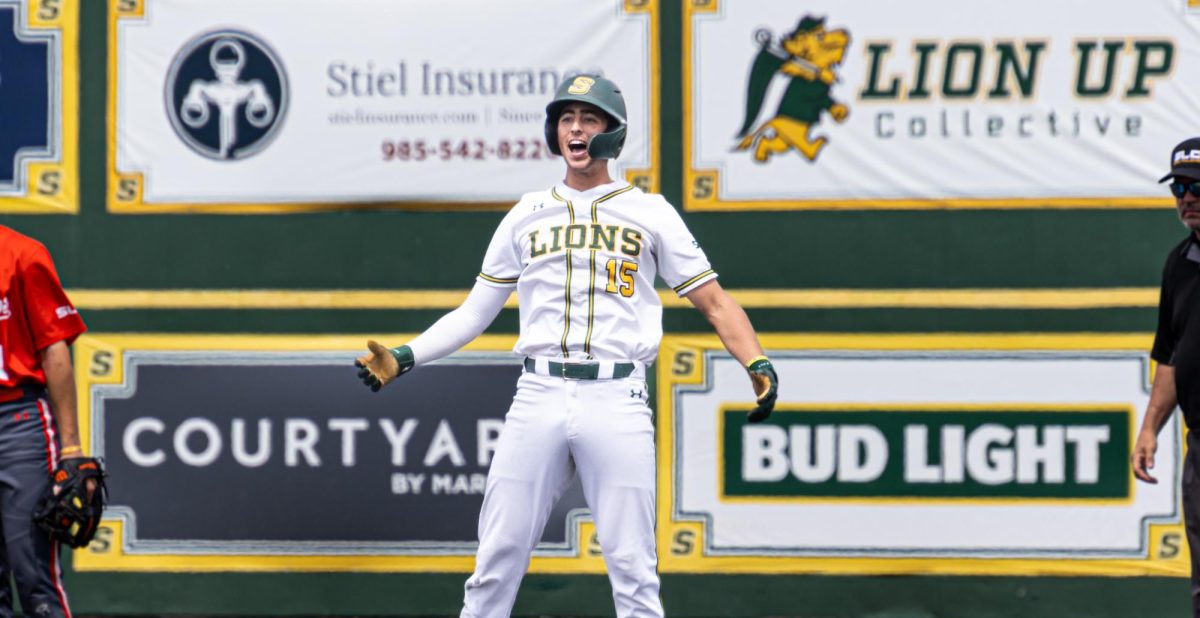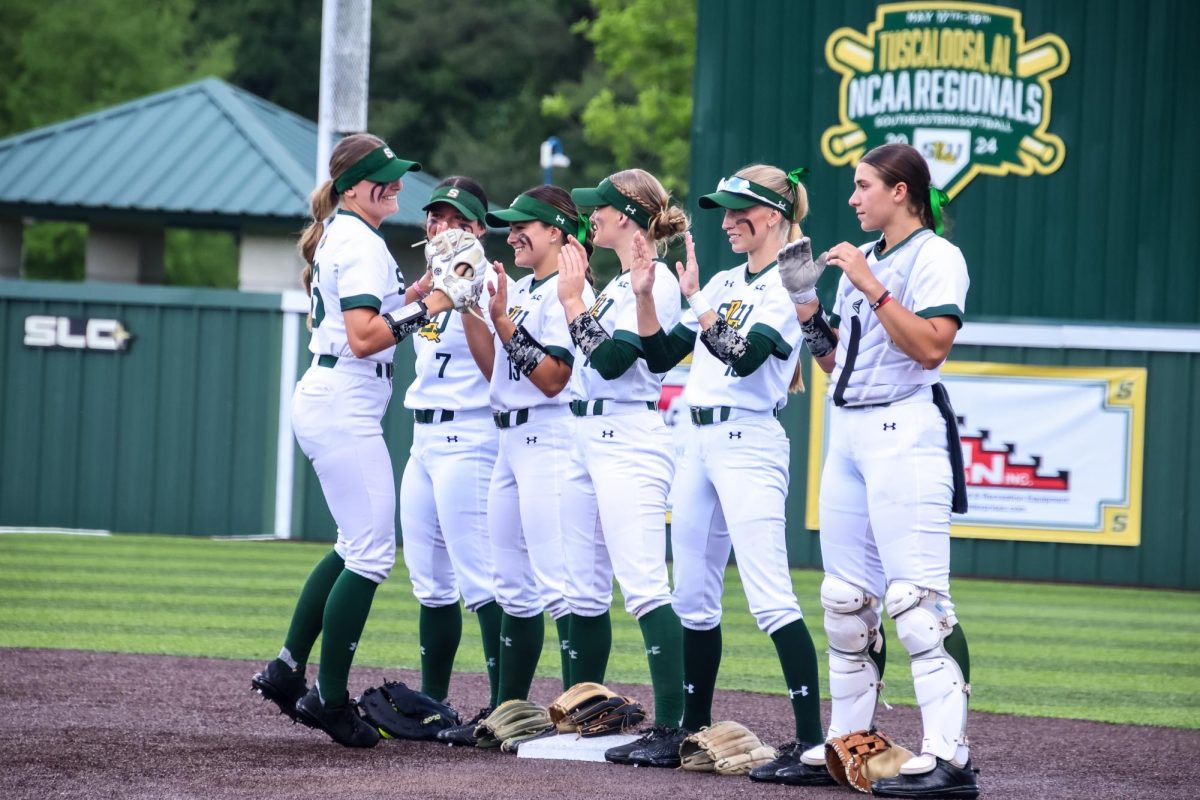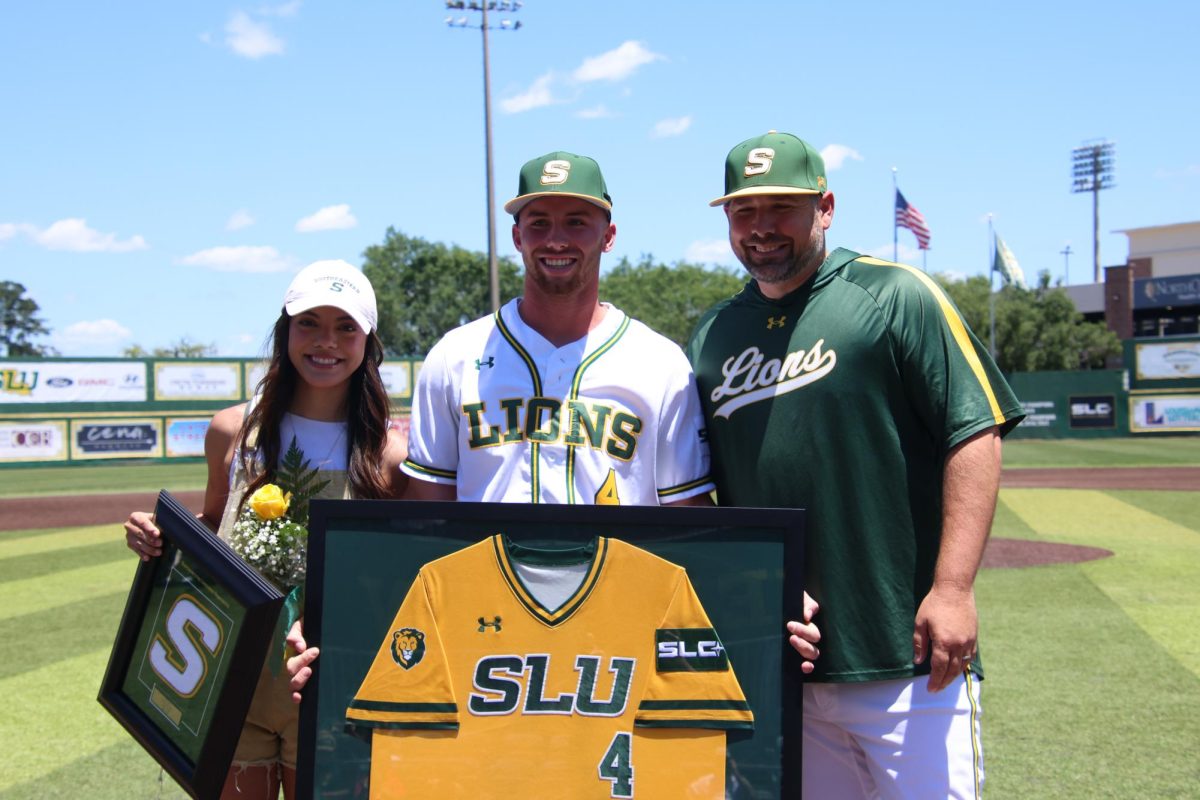Southeastern’s Contemporary Art Gallery is hosting Maria Lino’s exhibit “Rituals/Rituales” through Aug. 29.
“Rituals/Rituales” is inspired by Lino’s background as a Cuban immigrant and includes artwork that spans her 40-year career in art production. Lino’s career began in New York City, where she worked with a documentary production center. In 1980, she was given a VHS camcorder and an assignment.
She took this opportunity to film her family.
“I digitized the footage years later when digital became available and started editing it…Rituals & Harina became my first ‘video art’ project/installation,” Lino said.
Lino’s identification as a Cuban and her childhood greatly influenced her work.
At 11 years old, Lino’s family rooted themselves in America. She witnessed discrimination toward her brother for his disability and her father for speaking Spanish. Lino and the other children were not allowed to speak the language at school either.
“Being a woman and an immigrant who had a brother with Cerebral Palsy, I know how it [feels] to be overlooked. Visual art and writing are the skills I have to express myself in whatever concept or subject I choose,” Lino said.
“Rituals/Rituales” focuses on the domestic labor of women.
“I’m interested in the rhythms, sounds and sequences of manual labor as visual narratives of cultural legacies, exploring concepts of repetition, perseverance and the patience required to create with our hands,” Lino stated.
Lino’s aunt, Tia Olga, shown in the exhibit, organized sewing circles. While sewing, the women talked about their lives. Lino watched and participated, which awakened interest in rhythmic repetition and women’s lives.
In Lino’s “Drawn Stitches” exhibit, there is a woman, Olga Mori, who lives as an artisan and healer. Also, Blanca Yahuarcani, a cook, is shown in Lino’s “Blanca and Juanes.” These two women are included in the “Rituals/Rituales,” but made their first debut in Lino’s series “Manos Trabajadoras/Working Hands,” filmed in Peru.
Lino traveled to complete some of her work. Her first trip to Peru was in 2010, where she met Juana Portofino Callán, an Andean woman from Caraz. Callán inspired Lino because of her knowledge, humor and spirit.
“I started documenting her daily routines while listening to her life stories,” Lino said. When she saw her hands working, she said “manos trabajadoras,” which translates to working hands.
That inspired Lino to make multiple videos of women who migrated to Peru’s capital, Lima, to work.
“Manos Trabajadoras/Working Hands” is dedicated to Callán.
Lino’s work spans from Yarinacocha, in the Peruvian Amazon region, to Lima, Peru’s capital on the Pacific Coast.
“I’m interested in untold, unknown stories to engage the viewer, hoping that they can relate to what they see and hear,” Lino said.
Before the exhibit closes, the gallery will host an artist talk on Aug. 22, where Lino will come to Southeastern and talk more about her work.
For more information, visit the Contemporary Art Gallery’s website.
Editor’s Note: Edits have been made as of Aug. 24 for accuracy


